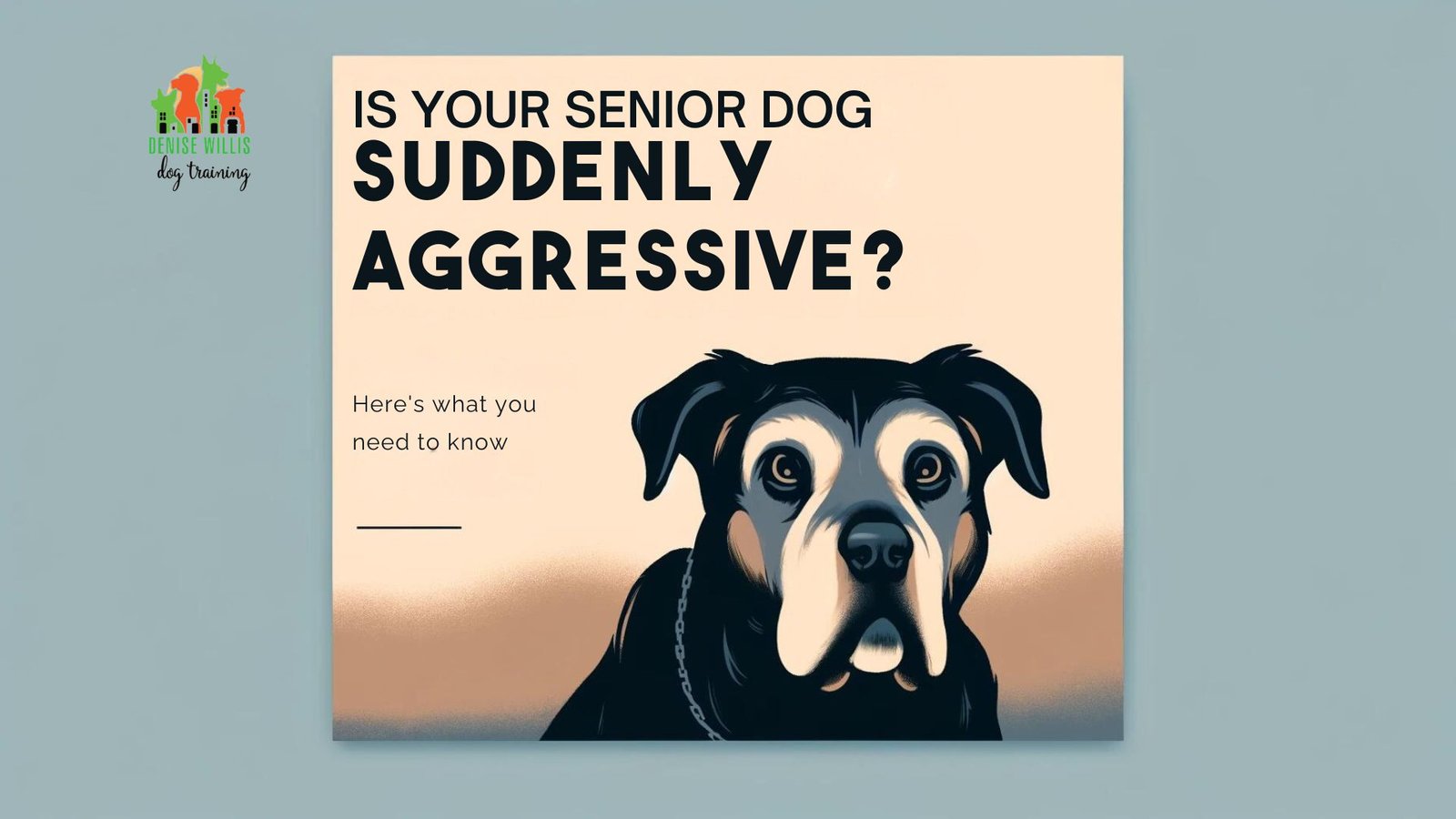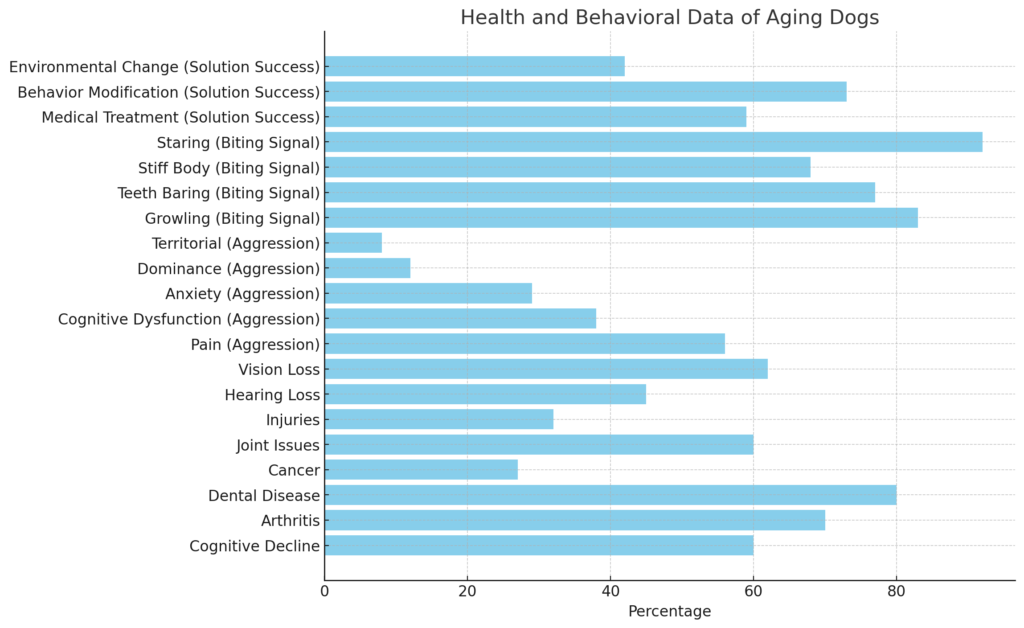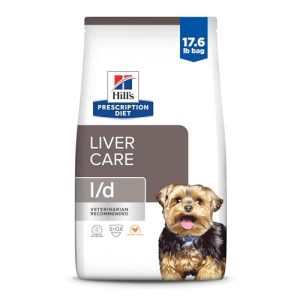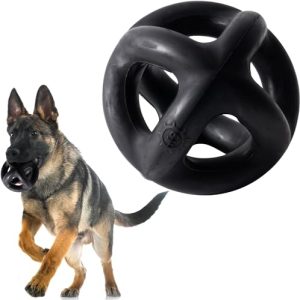Have you noticed your dog acting differently lately? Maybe your once playful pup seems more tired, or their mood has shifted without a clear reason.
These changes can be confusing and even worrying. Understanding why your older dog’s behavior is changing is key to helping them stay happy and comfortable. You’ll discover the common signs to watch for and learn practical tips to support your furry friend through their golden years.
Keep reading to make sure you’re giving your dog the care they truly deserve.
Signs Of Aging In Dogs
Dogs age just like people do. As they grow older, their bodies and minds change. These changes can affect how they act and feel.
Knowing the signs of aging helps you care for your older dog better. Watch for changes in their health and behavior.
Physical Changes
Older dogs often show physical signs of aging. Their muscles may weaken and their energy may drop. They might also have changes in their skin and coat.
Common physical changes include slower movement and stiffness. Dogs may also lose weight or gain weight as they age.
- Gray hair, especially around the face
- Less energy and more rest time
- Stiff joints and slower walking
- Changes in weight and appetite
- Thinner or duller fur
Cognitive Shifts
As dogs age, their brain function can slow down. They may forget things or seem confused at times. This is called cognitive decline.
Older dogs might have trouble learning new commands or forget old ones. They can get lost in familiar places or have trouble sleeping.
- Confusion or disorientation
- Forgetting training or routines
- Changes in sleep patterns
- Less interest in play or interaction
Behavioral Variations
Older dogs can change how they act. They may become more anxious or less social. Some dogs might bark more or less than before.
Changes in behavior can also mean your dog feels pain or discomfort. Pay attention to new habits or moods.
- Increased anxiety or restlessness
- Less interest in socializing
- Changes in barking or vocalization
- New hiding or seeking behaviors

Credit: www.dwdogtraining.com
Common Behavior Changes
As dogs age, they may show different behaviors. These changes can be due to health issues or simply getting older.
Understanding these changes can help you care for your older dog better. Here are some common behavior changes seen in older dogs.
Increased Anxiety
Older dogs may become more anxious. This can be due to decreased senses or health problems. They might react to loud noises or new environments.
- Barking or whining more often
- Pacing around the house
- Hiding in quiet places
Changes In Sleep Patterns
Older dogs often sleep more during the day. They might also wake up more at night. This change can affect their mood and energy levels.
| Time | Activity |
| Daytime | Increased sleep |
| Nighttime | Frequent waking |
Reduced Activity Levels
As dogs age, they may become less active. They might not play as much or tire out quickly. This is often due to joint pain or other health issues.
Altered Social Interactions
Older dogs might change how they interact with people and other pets. They may become less interested in socializing or more attached to their owners.
Health Factors Affecting Behavior
Older dogs often show changes in behavior. These changes can come from health issues. Understanding these factors helps to care for aging dogs better.
Many health problems can affect how an older dog acts. Pain, loss of senses, and chronic illnesses all play a role in behavior shifts.
Pain And Discomfort
Pain from arthritis or injury can make dogs less active and more irritable. They may hide or growl when touched. Behavior changes come as they try to avoid pain.
- Reluctance to move or play
- Increased aggression or snapping
- Changes in sleeping spots or patterns
- Excessive licking of painful areas
Sensory Decline
Loss of hearing and sight can confuse older dogs. They may startle easily or not respond to commands. This can cause anxiety or clinginess.
| Sensory Type | Behavioral Impact |
| Hearing Loss | Does not respond to calls or noises |
| Vision Loss | Bumps into objects, hesitates to move |
| Smell Decline | Less interest in food or walks |
Chronic Illness Impact
Long-term diseases like diabetes or kidney problems can affect mood and energy. Dogs may seem tired, lose appetite, or show confusion.
Common behavior signs of chronic illness include:
- Excessive drinking or urination
- Unexplained weight loss or gain
- Changes in sleep cycles
- Unusual aggression or withdrawal

Credit: www.purina.com
Adjusting Your Care Routine
Older dogs need special care to stay happy and healthy. Changes in their body and mind require new routines. Adjusting your care helps your dog feel comfortable and loved.
Small changes in diet, exercise, and living space can make a big difference. Learning what your dog needs now will keep them safe and active.
Diet And Nutrition
Older dogs often need food with fewer calories but more nutrients. Good nutrition helps with joint health and energy levels. Talk to your vet about the best diet for your dog’s age and condition.
- Choose food made for senior dogs
- Include foods rich in omega-3 fatty acids
- Feed smaller, more frequent meals
- Make sure fresh water is always available
Exercise Modifications
Older dogs may not have the same energy for long walks. Gentle exercise keeps their muscles strong and joints flexible. Adjust the activity to fit their comfort level.
- Shorter walks on soft ground
- Gentle play sessions indoors
- Use ramps or stairs to reduce jumping
- Watch for signs of tiredness or pain
- Consult your vet for exercise advice
Comfortable Living Spaces
Creating a cozy space helps older dogs rest and feel safe. Soft bedding and easy access to favorite spots are important. Keep the area clean and quiet.
| Item | Purpose |
| Orthopedic bed | Supports joints and bones |
| Non-slip rugs | Prevents slipping on floors |
| Ramps | Helps with stairs or furniture |
| Night light | Improves visibility in the dark |
Training And Mental Stimulation
Older dogs often show changes in behavior as they age. Training and mental activities help keep their minds sharp.
Gentle training and fun tasks can improve their mood and reduce stress. Mental challenges are good for their brain health.
Gentle Training Techniques
Older dogs may learn slower, so training should be calm and patient. Use soft voices and avoid quick movements.
Keep training sessions short to prevent tiredness. Reward good behavior with treats or praise to encourage them.
- Use simple commands and repeat them often
- Give treats immediately after good actions
- Train in quiet places with few distractions
- Be patient and positive during all sessions
Interactive Toys
Interactive toys keep older dogs active and mentally alert. Toys that hide treats can motivate them to think and move.
Choose toys that match your dog’s size and ability. Avoid toys that are too hard or cause frustration.
- Puzzle feeders to slow down eating
- Soft chew toys for gentle play
- Toys that make sounds or move slowly
- Simple hide-and-seek games with toys
Routine And Consistency
Older dogs thrive on routine. Feeding, walks, and playtime at the same hours help them feel secure.
Consistent training commands avoid confusion. This helps dogs remember better and follow directions easily.
- Set regular times for meals and walks
- Use the same words for commands every time
- Keep daily activities calm and predictable
- Monitor behavior changes and adjust routines
When To Seek Veterinary Advice
Older dogs may show changes in behavior as they age. Some changes are normal, but others need a vet’s check.
Knowing when to see a vet helps keep your dog healthy and comfortable. Watch for signs that need attention.
Recognizing Warning Signs
Look for sudden or severe behavior changes in your older dog. These can signal health problems.
Warning signs include confusion, aggression, loss of interest, or changes in sleep patterns.
- Sudden confusion or disorientation
- Increased anxiety or restlessness
- Aggression without clear cause
- Changes in eating or drinking habits
- Loss of house training skills
Behavioral Assessments
A vet can assess your dog’s behavior and look for medical causes. They check mental and physical health.
Behavioral assessments help identify problems like dementia, pain, or sensory loss in older dogs.
- Review of behavior changes by the owner
- Physical examination
- Neurological tests if needed
- Blood tests to check organ health
- Observation of your dog’s response to stimuli
Treatment Options
Treatment depends on the cause of behavior changes. It can include medication, diet, or therapy.
Vets may suggest changes to your dog’s daily routine to improve comfort and reduce stress.
- Medications to manage pain or anxiety
- Special diets to support brain health
- Exercise plans suited for older dogs
- Environmental changes for safety and comfort
- Behavioral therapy or training support

Credit: www.dwdogtraining.com
Frequently Asked Questions
What Are Common Signs Of Older Dog Behavior Changes?
Older dogs often show slower movements, increased sleeping, and less interest in play. They may also become more anxious or forgetful, showing signs of confusion or disorientation. Changes in appetite or bathroom habits are also common behavioral signs in senior dogs.
How Can I Help My Dog With Aging Behavior Issues?
Provide a comfortable, quiet space for rest and maintain a consistent routine. Regular vet check-ups help identify health problems early. Mental stimulation and gentle exercise support cognitive and physical health. Patience and positive reinforcement improve your older dog’s quality of life.
Why Is My Older Dog Suddenly More Aggressive?
Aggression in older dogs can stem from pain, cognitive decline, or sensory loss. Health issues like arthritis or dental pain may cause irritability. A vet visit is crucial to rule out medical causes. Behavioral changes often improve with proper treatment and care.
When Should I Consult A Vet About Behavior Changes?
Consult a vet if your dog shows sudden or severe behavior changes. Signs include confusion, aggression, loss of house training, or drastic appetite shifts. Early diagnosis helps manage underlying health issues effectively, ensuring better care for your aging dog.
Conclusion
Older dogs show changes in behavior as they age. These changes are normal but need attention. Watch for signs like confusion, less energy, or mood shifts. Regular vet visits help catch problems early. Patience and care improve your dog’s comfort and happiness.
Understanding these changes keeps your bond strong. Enjoy the time with your older dog. They still need love and support every day.

Emily Barker is the founder of ChillDogLife.com, a space dedicated to helping pup parents discover the best dog products, lifestyle tips, and cozy ideas for happier homes.
A lifelong dog lover, Emily combines her passion for pets with a knack for research to share trusted recommendations on everything from toys and furniture to health and everyday care.
Her goal is simple: to make life easier, stylish, and more joyful for dogs and the people who love them.







